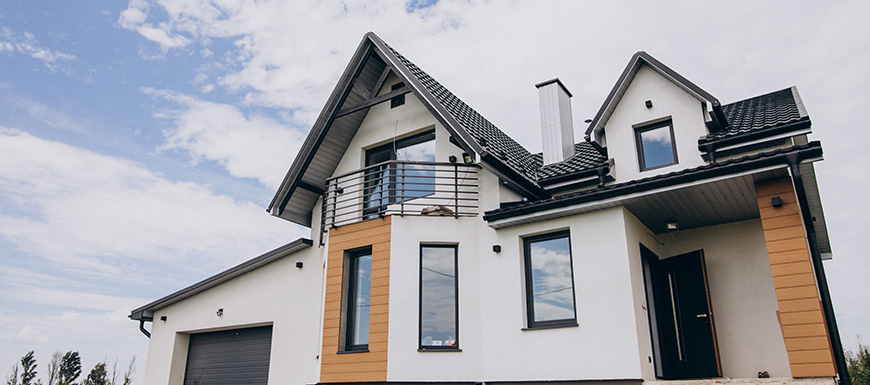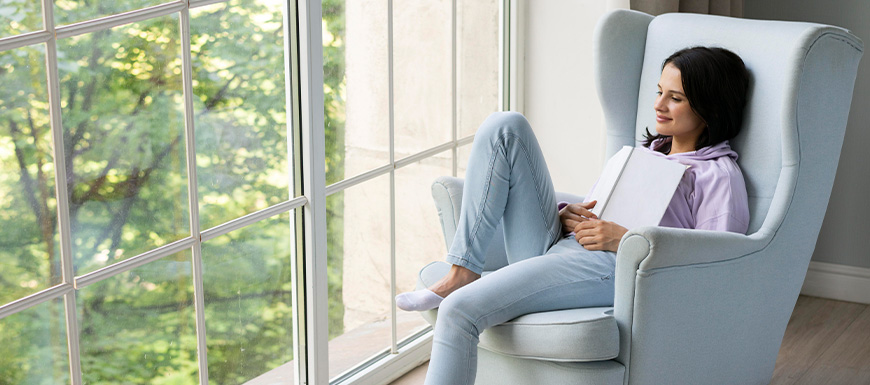
Over the last few years, air purification has become a top concern for people. For one, having to deal with a unique airborne disease has put us on alert. Secondly, air quality overall has declined because of extensive, long-lasting forest fire smoke clogging up our skies. Thirdly, working from home we were getting less fresh air, which meant we spent our days stewing in allergens from pets and dust, etc.
People with respiratory issues have been finding it increasingly difficult to deal with changes in air quality as it slowly permeates the air inside our houses and workspaces, too.
But where there are problems, there are solutions.
When we say air quality, we’re talking about indoor air health. It’s how good the air is in our homes and workspaces. Air purification doesn’t just affect our physical health but it also has an impact, negative or positive, on our overall comfort and wellbeing.
The air we breathe inside our house or at work contains invisible contaminants and pollutants at all times that can lead to health concerns and breathing issues.
Air contains a number of micro particles, such as allergens and substances, like dust, cigarette smoke, volatile organic compounds (VOCs) emitted as gases from household products, like paints and aerosols.
There are also other fine particles that reduce air quality, like mold, fungi, bacteria, dust mites, pollen, and spores.
The world of air quality science has invented a yardstick that measures the health of the air we breathe. It’s called the Air Quality Index (AQI), which uses a scale of zero to 500. Qualitatively, the AQI is divided into six categories: good, moderate, unhealthy for sensitive groups, unhealthy, very unhealthy, and hazardous.
The higher the AQI value, the greater the level of air pollution and ultimately, the greater the health concern. Generally, an AQI value of 50 or below represents good air quality, however, a value of 300 or more means the air quality is hazardous.
So why should you care?
Well, mainly because air is one of the primary elements that keep you alive and well. Bad air quality is a danger. It can cause a variety of health problems, like respiratory, cardiovascular, nervous system and even issues with reproductive systems. Polluting particles also irritate eyes and can increase the impact of seasonal allergies. Contaminants in the air can also cause itchy skin, nausea, and headaches.

Air purifiers are a good way to begin addressing the AQI in your home.
Single-room air purifiers have been around for some time now. But you can’t be confined to the one room that contains the purifier unit. Instead, consider a whole home purifier for better coverage and cleaner airflow.
What do air purifiers do? In short, they improve the overall air quality in your home and make it a healthier place to live.
Improved air quality: A whole home air purifier can help remove a wide range of contaminants from the air, including dust, pet dander, mold, spores, and pollen. However, if you identify that mold is causing air quality issues, we encourage you to explore proper treatment for it.
Reduced allergy symptoms: People are increasingly being diagnosed with allergies, because of exposure to higher allergens in the air. If you or someone in your household has allergies, a whole home air purifier can help remove allergy-causing particles, reducing symptoms.
Better sleep: Poor air quality can make it difficult to fall asleep and stay asleep. A whole home air purifier improves air quality in your bedroom, allowing you to sleep soundly.
Getting a single-unit air purifier should be on your radar, but here are a few reasons you should consider getting a whole house air purifier.
Most single room air purifiers are small appliances that can clean spaces up to 300 square feet. If you’re living in a house 1,500 square feet or more, you would have to get at least five separate air purifiers to cover all that ground. All those appliances would take up room and become costly because of regular upkeep. Maintenance can then become a tedious, time-consuming chore.
A whole home air purifier, however, works in combination with the central heating and cooling system of the house to clean air on a large scale, for the entire building.
Further, a single room air purifier may be cheaper, but it may also be less efficient in removing particles larger than 10 micrometres.
Need more convincing? We have a few more reasons.
Increased energy efficiency: Some whole home air purifiers use advanced filters that can remove particles that may clog your HVAC system. This neat cleaning feature improves the health of the HVAC system so it can perform better with less energy.
Longer lifespan for your HVAC system: If the air purifier is constantly cleaning your HVAC system, it’s also inevitably extending its life by removing contaminants that can build up and cause damage over time.
Easy maintenance: Most whole home air purifiers are designed to be low maintenance, with easy-to-replace filters that can be changed regularly. But make sure you check manufacturer instructions before doing so.
Increased home value: Having a whole home air purifier can be a good selling point and can increase the value of your home.

One of the first features you should study in a whole home air purifier is the effectiveness of the air filter it uses. This can be measured by what’s called a Minimum Efficiency Reporting Value (MERV) rating. MERV ratings range from 1–16 — where higher ratings mean the filter will catch more particles and contaminants.
You might also want to consider the filter’s ability to capture and kill particles it traps. It’s a good sign if a filter is able to do so in micron size range 1.0 to 3.0 and destroy 99% of (select) airborne viruses and bacteria.
In addition, it’s recommended that you look for a unit tested by Consumer Reports or certified by the Association of Home Appliance Manufacturers (AHAM). You can also ask your whole home air purifier installer for the Clean Air Delivery Rate (CADR). This measures how quickly a unit delivers filtered air and indicates the performance of the air purifier. The higher the CADR, the more quickly the purifier filters air.
It is generally advised that you use an HVAC filter that is 2” or 4” thick as compared to a 1” filter. Thicker filters are generally more expensive, but they need to be changed less often.
HEPA Filter: It’s also a good idea to look into installing a HEPA filter, which is a high efficiency particulate filter that removes up to 99.97% of airborne particles. Maintaining HEPA filters is very easy, as most can be washed or new ones can simply be placed into the unit. As always, read those manufacturer instructions.
Carbon Air Purifier: This filter uses activated carbon to clean and absorb allergens and contaminants in the air, especially smells, odours, gases, and smoke. This type of air purifier can also be used in combination with a HEPA filter.
The government of Canada warns that some commercially available air purifiers may use ultraviolet irradiation, ozone generation, ion generators, or other technologies that may pose a health hazard while providing little benefit to air cleaning.
Many of these products may be marketed as ‘emerging technologies’ that aren’t backed by sufficient scientific evidence.
Replacing a filter may be a DIY job, but it’s a good idea to hire a professional installer to set up the whole home air purifier. Experts will ensure the filter(s) are fitted properly so there is no air leakage around the unit. Although it may appear that filters are easy to change, you should always follow manufacturer instructions.

Air purifiers generally can’t remove larger allergens that have already settled into furniture and carpets, unless they’re stirred and redistributed into the air.
These tasks may seem like chores, but they’re important for boosting air quality.
Use a vacuum cleaner with a HEPA filter once or twice a week to clean floors and furniture to take care of those nasty, hidden particles.
Use an exhaust fan while cooking indoors, in bathrooms, and in the laundry room. You might even want to open windows in those areas for some fresh air.
Avoid burning candles, incense, and wood fires indoors.
Switch to safer and more natural cleaning products. Store house paint, glues, and insecticides in a closed section of the basement or outside in a covered shed.
If you’re still not sure how to make this choice, talk to air purifier experts at Advance Heating and Cooling for the best option for your house.
